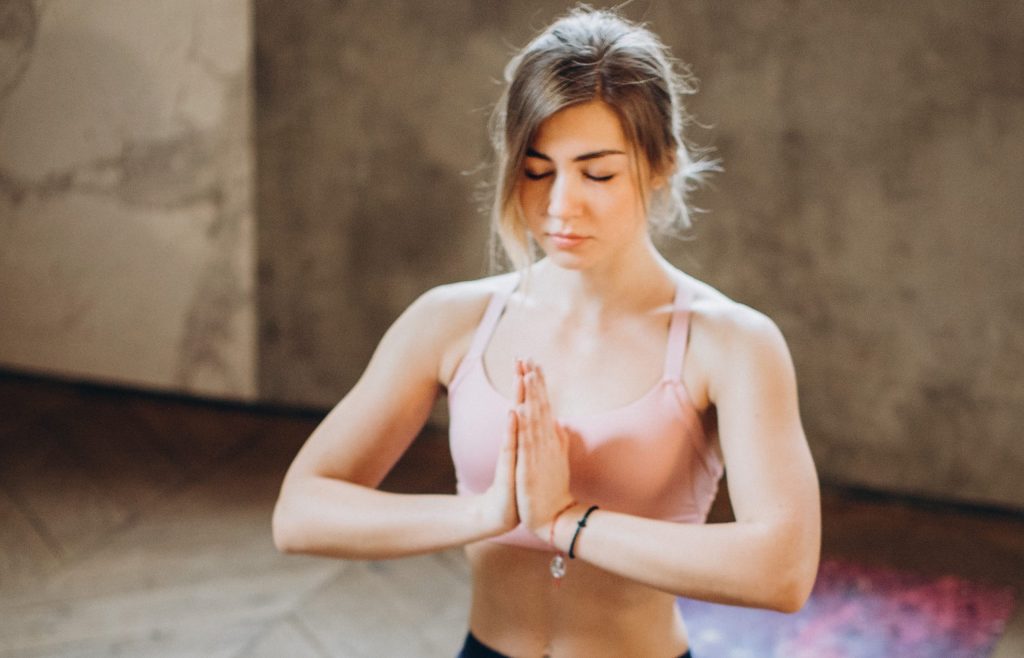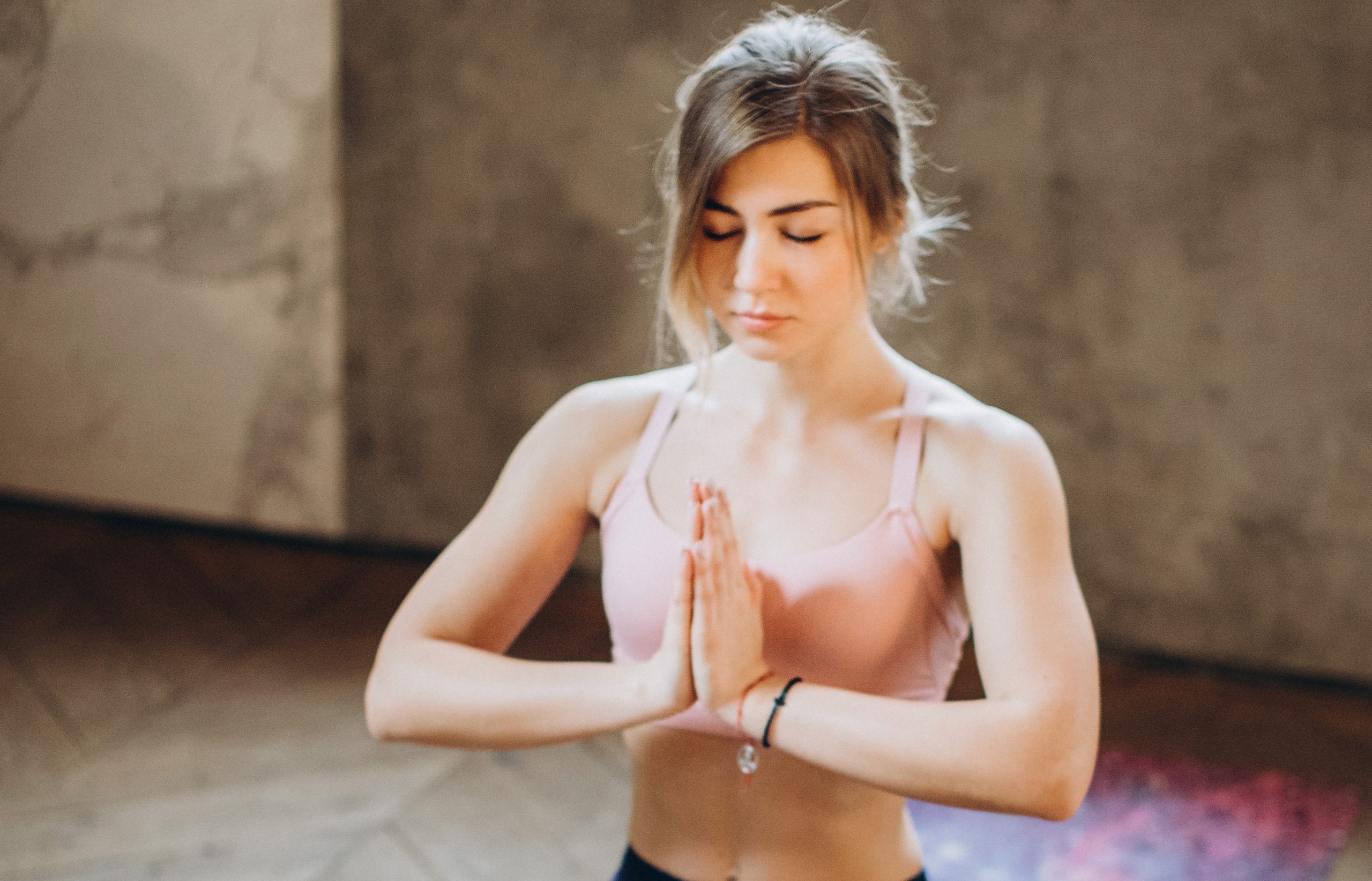“Hatha Yoga teaches us to use the body as the bow, asana as the arrow, and the soul the target”
– B.K.S. Iyengar
The practice of Yoga has taken the world by storm. People all over the globe are learning this art to stay
healthy, fit, and happy as well. Further, there is an increasing inclination towards Hatha Yoga wherein
the focus is not just on one’s health but also on the awakening of the energies residing within the body.
Basically, Hatha Yoga represents the physical postures of yoga but also helps in revitalizing the mind.
What is Hatha Yoga?
Hatha yoga is a combination of two words where ‘Ha’ stands for the sun and ‘Tha’ stands for the moon.
This means Hatha Yoga is the Yoga of Balance. It balances the energy of the sun and the moon in the
body. In Hindi, Hatha also means force. And hence, Hatha Yoga is also considered as the Yoga of activity.
While practicing Hatha Yoga, one needs to master a set of physical postures known as yoga asanas along
with several breathing techniques known as pranayama. These postures are practiced slowly staying
still, focusing more on the art, as compared to other forms of yoga.
Hatha Yoga – A Path to Enlightenment
Hatha Yoga includes yoga asanas, pranayama, mantra recitation or chanting, mudra or hand gestures,
cleaning techniques or shatkriyas, and also different kinds of visualization techniques and finally when
everything else is mastered, the practitioner moves on to meditation. Hatha Yoga balances the positive
(Solar) and negative (Lunar) energies present in the body. It acts as a bridge between the human body
and spiritual awakening. It is believed that to practice meditation, one needs to first perfect the posture
of the body. And that is what one learns through the practice of Hatha Yoga. Hatha Yoga eases the path to
meditation.
Hatha Yoga – The Requirements
Just like to prepare food, you will need ingredients, to perfect Hatha Yoga, you will need to possess
some qualities to master it. These are enthusiasm to learn, perseverance, the art of discrimination, constant faith, and finally courage.
Enthusiasm – to learn anything, one needs to cultivate an interest in the same. Without interest or
inclination, the person will not possess the will to carry on the path and overcome the challenges that
are encountered.
Perseverance – it refers to continuing the efforts through regular practice. The practitioner requires
determination to learn the postures and then perfect them.
Discrimination – it means the practitioner should learn to discriminate between the lifestyle choices,
what will help him or her to accomplish the purpose and what will help defeat the same
Constant Faith – the practitioner needs to have unshakable faith. One needs to have the unwavering
trust on his own self to succeed on the path
Courage – here, courage requires the practitioner to be brave to accept the weaknesses or vulnerability.
When a person knows his weaknesses, it becomes easier for him to understand his own self better and
eventually conquer the hurdles.
The Benefits of Hatha Yoga
As explained earlier, Hatha Yoga is not just about physical aspects but also about the soul and its
awakening. Hatha Yoga practitioners experience both physical and mental fitness.
Physical Benefits
1. Muscular Strength
When practiced on a regular basis, Hatha Yoga asanas or poses help improve the core strength of the
body. All the muscles present within the body get a complete workout. When the muscles are strong, one
does not face difficulty performing routine activities like climbing the stairs or as simple as bending to
pick something. Hatha Yoga helps in strengthening the spine and improves its ability to a great extent.
2. Balance and Posture
Hatha Yoga asanas work on the entire body, especially the spine. Through practice, one learns how
to balance both hands and feet at the same time. When the entire body is aligned, one does not lose the
balance during the practice. Further, the chance of injuries is reduced as well. Regular practice of the
postures helps in erecting the spine and correcting the posture.
3. Cardiovascular Health
Hatha Yoga involves practicing different movements of yoga at a slower pace. Diverse asanas combined
with relaxing breathing techniques help the practitioner lower the blood pressure of the body and
thereby calm the nervous system. The practice of specific asanas helps in reducing the heart rate.
People who have earlier suffered a stroke or hypertension benefit the most out of the practice of Hatha
Yoga.
4. Calms Nervous System
The controlled postures involved require the practitioner to move from one asana to another in a gentle
movement. The breathing technique is slow and systematic while the body of the practitioner stretches
with every movement. When practiced in totality, it helps to calm down the nervous system of the body.
5. Boosts Immune System
Hatha Yoga is a therapy for the body. Regular practice of asanas helps in reducing high blood pressure,
lowering down the cholesterol, levels of blood sugar, and also triglyceride levels. It alleviates the stress
hormones present in the body as well. The technique of controlled breathing helps in easing the heart
palpitations. By improving the balance of the body, Hatha Yoga asanas relieve the symptoms of arthritis
in patients. It is the best practice to boost the immune system of the body.
Mental Benefits
1. Happy State of Mind
It is important to calm the mind to negate emotions like irritation, anger, jealousy, and frustration. By
practicing different asanas of Hatha Yoga combined with pranayama, the practitioner gets a holdover
the mind and its emotions or feelings. It helps reduce the stress involved in routine activities. Hatha
Yoga helps in pacifying the mind and the train of thoughts, eventually making the person tranquil and
bringing him to the state of happiness.
2. Positive Attitude
The basis of Hatha Yoga is developing a positive attitude. Without the same, it is difficult to learn the
techniques involved. By practicing different asanas on a regular basis, the practitioner learns to balance
the body. This helps in improving concentration and focusing on the positive aspects of life. The
body suffers both physically and mentally on a constant basis. Hatha Yoga heals the body and the mind
by transforming the outlook towards the sufferings.
3. Being in the Present
When the person practices different movements involved, he stills the mind while focusing on the
present moment. The thoughts of the person slow down and he experiences stillness of the moment. He
realizes that he is in the present practicing the asana.
4. Restful Sleep
Hatha Yoga practice helps in cultivating peaceful thoughts. This results in the acceptance of the present
state of being. Practitioners experience a reduction in routine stress and attitude of positivity in daily
activities. Both the physical movements and still mind contribute to deeper and restful sleep. This
ultimately results in the revitalization of the body.
5. Overall Health
People who practice Hatha Yoga experience stronger immunity. It helps in improving the lifestyle of the
practitioner, better food choices, the disciplined cycle of sleep, and reduction in stress. The body is less
prone to infections and diseases. Hatha Yoga also helps in burning calories and improving the flexibility of
the body. The skin of the practitioners too goes through positive transformation. It helps in slowing
down the aging process while toning the skin and preventing acne breakouts. Hatha Yoga helps the
body and skin absorb the nutrients effectively and thereby improve the flow of blood. To sum up, Hatha
Yoga helps in establishing a harmonious balance between body and mind.
Also Read: 11 Lifestyle Changes to Live a Long, Healthy and Disciplined Lifestyle
Hatha Yoga – The Spiritual Awakening
Hatha Yoga involves the practice of several asanas and breathing techniques. The practice of Hatha Yoga
helps cleanse the trapped energy inside the body. The different centers of energy present in the body
get channelized through regular practice. This helps in awakening the Kundalini of the body. Kundalini
refers to the divine feminine energy present at the base of the spine in the body, in Hinduism. When the
Kundalini of the person awakens or gets active, the person attains the state of higher consciousness.
Hatha Yoga – How to Begin
Hatha Yoga can be learned through books or the internet, however, the best practice is to learn it under
the guidance and supervision of a Guru or a teacher. The first step in Hatha Yoga is pranayama.
Breathing slowly and gradually helps in calming down the body. The second step is learning the basic
asanas or yoga postures. And the third step is to cool down the body post the asanas.
Let’s learn Hatha Yoga
Including Hatha Yoga in the present busy lifestyles proves to be beneficial. It might seem a little difficult
during the early stages of the practice. However, staying determined and focused on the art and science
of it gives great results. Hatha Yoga is an opportunity to unwind and awaken to the higher state of being. You can know more about Hatha Yoga and learn it from here. Cheers to a happy and healthy life.


